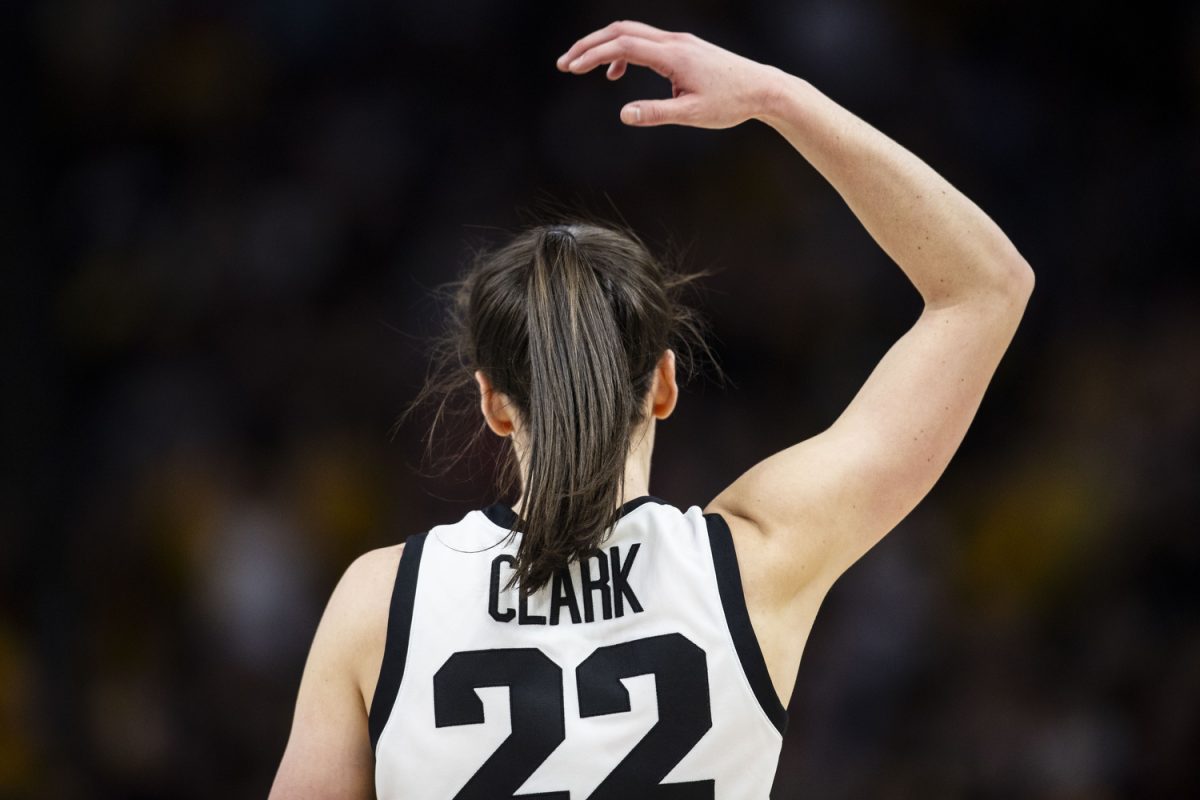Any volleyball player will say height is an advantage.
Being tall allows for a player to elevate high above the net to block a shot or soar through the air to slam down an offensive kill.
However, any volleyball player will also say that height isn’t everything.
With only six players on the Iowa roster listed as 6 feet tall, the Hawkeyes aren’t necessarily considered a team of intimidating size. Nevertheless, being a smaller team also has its benefits — especially on the defensive side.
“If we can get every single ball up that the other team is hitting at us, chances are good that we’ll tire them out because they aren’t used to having to play that many times,” senior setter and defensive specialist Christina Meister said. “So by focusing on defense for us, it gives us more opportunities to attack the other team, and it [allows] more opportunities for them to make an error.”
Meister, a libero, was named Big Ten Defensive Player of the Week for her performance at the Green Bay Classic on Sept. 4-5. She tied a school-record with 36 digs against Central Michigan at the tournament.
The West Des Moines native also ranks second in the Big Ten with 4.81 digs per game. As a team, Iowa currently averages 17.06 digs per game, ranking 15th in the country and first in the conference in that category.
“It’s exciting,” head coach Sharon Dingman said. “I think any time you can lead the Big Ten in any stat, you should feel good about that. We know that’s one of our strengths, and that’s what we’re going to continue to focus on. Our goal this year was to be the best digging team in the conference.”
Perhaps being defensive-minded explains why the Hawkeyes got off to their hottest start in more than 21 years, going 6-0 to begin the season. During practice, drills involving digging are often incorporated.
Working with assistant coach Ben Boldt, the team’s defensive specialists work on their footwork, ball control, and technique. With balls coming in at high speeds, players need to learn how to safely absorb contact with the ball while also being able to control how it ricochets off their bodies.
“You don’t want to be stiff or rigid when you dig the ball, because the ball will come off your arms at about 70-80 miles an hour,” Boldt said. “What we want to be able to do is cushion the ball so it comes off at about 20. We’ve got to take all that ball’s energy and absorb it, and we got to use all the muscles in our body to do that.”
Digging can almost be viewed as an art form. If watched in slow motion, there’s a seemingly delicate type of elegance as a player stretches her body in hopes of trying to stop the ball from hitting the ground.
However, digging is more intense. It requires quick reflexes, agility, and having reckless concern for one’s own body.
“Sometimes digging hurts,” junior defensive specialist Samantha Brannigan said. “I think as the years go on, the more and more you play volleyball, you kind of learn how to fall. You learn ways so it doesn’t hurt your body so much and even if it does, your adrenaline is just pumping so fast at the moment.”
In terms of the game, executing a dig can be a momentous play for a team.
“If you can’t dig it, then you can’t transition it to offense,” Meister said. “So the fact that we are digging a lot of balls for volleyball is huge for our team because the more we can dig, the bigger chance it gives our hitters to hit.”






